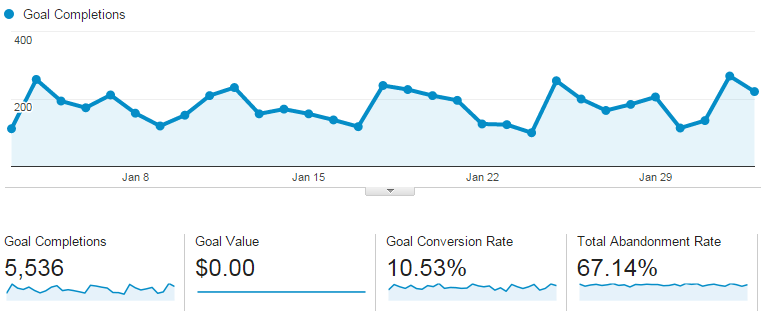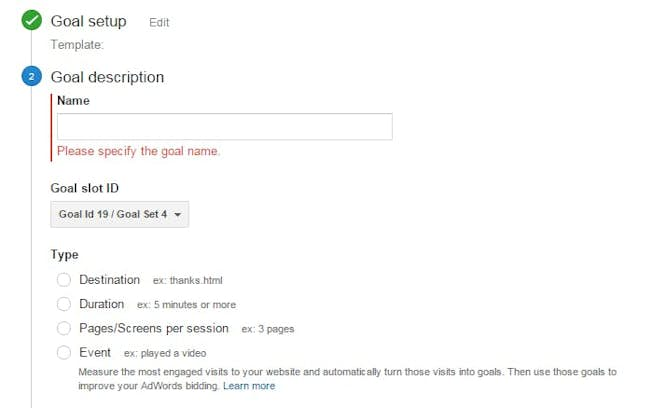Trick Insights on What Data Is Google Analytics Goals Unable to Track
Trick Insights on What Data Is Google Analytics Goals Unable to Track
Blog Article
Discover the Limitations of Google Analytics Goals: Introducing the Data Kind That Remain Untrackable
As organizations significantly count on data-driven decision-making, recognizing the restrictions of devices like Google Analytics ends up being extremely important. While Google Analytics Goals offer useful understandings right into user interactions, there exist information types that avoid monitoring, posturing difficulties to a comprehensive understanding of individual habits. These untrackable information types elevate inquiries regarding the precision and efficiency of the analytics data that organizations heavily rely upon for their digital approaches. Curious to uncover the concealed blind spots in your information analysis process?
Incomplete Individual Journey Tracking
Insufficient user journey monitoring within Google Analytics can hinder the capability to properly evaluate individual behavior. When the user journey is not totally tracked, there are gaps in the information that avoid a thorough understanding of how individuals communicate with a web site. This absence of insight can cause missed out on possibilities for optimization and improvements to the individual experience.
One typical problem with incomplete user trip monitoring is the failure to see the full path that users take in the past finishing an objective or leaving the website. Without this info, it is testing to determine where customers might be encountering barriers or rubbing points that stop them from transforming. In addition, incomplete tracking can cover the influence of specific advertising and marketing initiatives or internet site adjustments on individual behavior.
To address this constraint, it is crucial to set up proper tracking systems within Google Analytics to record the whole customer journey. This may include setting up occasion tracking, objective funnels, or utilizing devices like Google Tag Manager to ensure that no vital communications go unrecorded. By acquiring an extensive sight of the individual trip, web site owners can make more informed choices to enhance individual engagement and drive conversions.
Attribution Obstacles
Browsing via acknowledgment difficulties in Google Analytics requires a thorough understanding of exactly how various touchpoints add to the overall conversion process. Acknowledgment difficulties occur from the intricacy of modern-day client journeys, where customers connect with numerous networks before converting. Google Analytics gives different acknowledgment designs like first touch, last touch, and direct, each using a different perspective on how credit score is designated to touchpoints along the conversion course. However, these versions may not always precisely mirror truth impact of each touchpoint on the conversion.
One typical attribution obstacle is the problem in attributing conversions to the proper source, specifically in situations where users connect with several channels prior to transforming. Additionally, cross-device tracking positions one more attribution challenge, as individuals typically switch over between tools throughout their journey, making it testing to track their interactions perfectly.
Offline Conversions
Provided the difficulties associated with connecting conversions precisely in online networks, the measurement of offline conversions offers a significant possibility for marketing experts seeking a much more comprehensive understanding of their customers' trip. Offline conversions refer to actions that consumers take in the real world, such as making acquisitions in brick-and-mortar shops or over the phone, attending occasions, or involving with published materials - what data is google analytics goals unable to track. These conversions are crucial for organizations that run both online and offline, as they give beneficial insights into the efficiency of advertising and marketing projects across various touchpoints
Tracking offline conversions generally posed a considerable obstacle for online marketers, as it was testing to attach these activities back to particular on the internet interactions properly. However, with developments in innovation, such as the assimilation of CRM systems, one-of-a-kind identifiers, and discount coupon official statement codes, services can currently link the gap between online and offline information to obtain a much more holistic sight of consumer habits. By effectively gauging offline conversions, marketers can optimize their methods, designate resources much more efficiently, and inevitably boost the general client experience.
Cross-Device Tracking
Cross-device monitoring plays a critical function in understanding the interconnected nature of customers' digital interactions throughout numerous gadgets. In today's omnichannel world, where customers effortlessly switch between smart devices, desktops, and tablets, tracking their habits across these gadgets is crucial for marketing professionals to acquire a comprehensive sight of their client journey.

Additionally, personal privacy problems and regulations such as GDPR and CCPA have even more complex cross-device monitoring. With individuals requiring even more control over their data and boosted limitations on monitoring innovations, marketers should discover privacy-compliant and cutting-edge means to connect individual communications across devices.
Dynamic Material Involvement
Understanding individual involvement with dynamic content is essential in maximizing electronic advertising strategies for improved target market interaction. Dynamic content describes website components that alter based on individual habits, preferences, or other factors, offering a customized experience. Read Full Report Tracking customer interactions with dynamic web content presents challenges for traditional analytics devices like Google Analytics.
While Google Analytics can track fundamental communications like clicks and web page sights, it might have a hard time to catch more nuanced engagements within dynamic content. what data is google analytics goals unable to track. Metrics such as time invested on details vibrant components, float activities, or interactions within pop-ups are often not conveniently measurable utilizing typical monitoring approaches. This limitation prevents marketing experts' capability to fully realize exactly how users are involving with vibrant material and customize their approaches appropriately

Conclusion
Finally, Google Analytics objectives have limitations in tracking incomplete customer trips, associating conversions accurately, recording offline conversions, tracking cross-device interactions, and determining vibrant material involvement. These restrictions highlight the value of checking out additional monitoring methods and devices to get a more thorough understanding of individual actions and conversions past what Google Analytics can supply.
While Google Analytics Goals deal valuable insights into customer communications, there exist data types that avoid monitoring, posing obstacles to a thorough understanding of user habits.Insufficient customer trip tracking within Google Analytics can prevent the capability to properly assess customer actions. When the individual journey is not fully tracked, there are gaps in the information that prevent an extensive understanding of exactly how users connect with a website.One common issue with insufficient individual journey tracking is the lack of ability to see the complete path that customers take in the past finishing an objective or leaving the site. By acquiring a detailed view of the user journey, internet site proprietors can make even more educated decisions to improve individual engagement and drive conversions.
Report this page